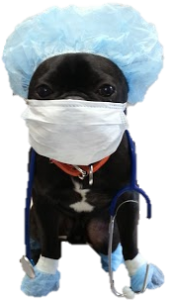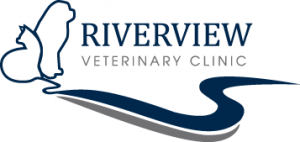Surgery
Riverview Veterinary Clinic offers both soft tissue and orthopedic surgical procedures.
- Castration
- Ovariohysterectomy (Spay procedure)
- Dental Prophylaxis cleaning and surgery
- Mass removals
- Repair for Cranial Cruciate Injury (“ACL” injury) including the TTA-2
- Ear hematoma correction
- Abdominal Surgery (exploratory, splenectomy, foreign body, resection)
- Bladder Surgery (stone removal, mass removal)
- Caesarian Section
- Amputation
- Tail Docking
- Declaws

Pre-surgical Requirements
All patients undergoing surgery or general anesthesia need to be fasted (empty stomach) for 8 hours to reduce complications during the procedures. Water, however, does not need to be withheld. Typically, our patients are fed dinner the night before as long as it is before 10:00 pm. Breakfast the next morning is NOT offered. Vomiting is the most common side effect associated with anesthesia and fasting your pet prior to surgery minimizes this risk.
Day of Surgery
On the morning of surgery for your pet, we do ask that you arrive 15-20 minutes prior to your scheduled appointment. This allows ample time to fill out any remaining paperwork and answer any questions that you may have regarding the procedure. After the surgical procedure is completed a staff member or doctor will call you to discuss the status and schedule a time in the late afternoon to pick up your pet. Please plan to spend 15-20 minutes with our staff for discharge instructions. We will discuss any medications that are prescribed and additional details for your pet at that time.
Anesthesia
Riverview Veterinary Clinic offers the latest medications and anesthetic protocols to ensure the safety of your pet. The technicians and surgical staff have been trained to assist the doctors for every surgical and dental procedure. Each patient will be evaluated and examined that morning by the surgeon. If necessary, pre-anesthetic medications may be administered to compliment the general anesthetic. During the surgical procedure, your pet will be closely monitored to ensure a proper safe plane of anesthesia. A designated technician will monitor temperature, heart rate, respiratory rate, oxygen concentration, EKG, and blood pressure during the entire procedure. Once the procedure has been completed, your pet will be moved into the recovery ward, where the technician continues to closely monitor until your pet is fully awake.


